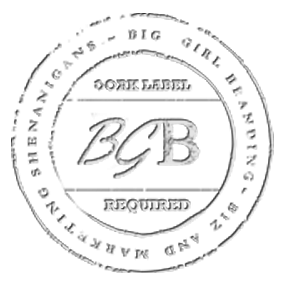This is a guest post courtesy of Melissa.
I’m glad she’s covering this topic because talking categories and tags bore me to tears! LOL
However they are a necessary evil when you run a blog, and Melissa does a great job of explaining why.
Methinks I may redo my own categories in the near future to make finding things more streamlined! Please make her feel welcome by sharing your thoughts in the comments.
You’ve done it! You’ve launched your blog, you’re developing your brand, and you’ve got lots of readers . . . right? OK, so maybe not–not right away, anyway. There are a number of ways to build your readership, but today, let’s talk categories and tags.
Any entrepreneur who has a blog and wants to attract readers needs to understand categories and tags. These features can be used to organize your content as well as help increase your search engine rankings, both of which will help readers find information about specific topics in your blog posts.
Blog categories are like folders for a blog’s content. In addition to being organized by date, blogs that use categories are organized by subject. Categories are typically displayed in a list in a sidebar. Think of this list as a table of contents for your blog: Readers can find all the posts about a certain subject by clicking on a category name. Categories should be general topics areas that are related to the overall theme of a blog.
Tips for Choosing and Using Categories
- Keep the number of categories manageable. Limit your categories to less than a dozen. Unless you have a huge amount of content, creating too many categories will require you to spread your posts too thin. A dozen or so is a good number to keep your content focused.
- Think of your readers when creating categories. Avoid going off on tangents with your categories or inventing your own names for things. Creating categories that relate to your blog theme will help readers find content that’s relevant to their searches.
- Display your categories prominently on your blog. Categories are navigation tools for readers, so make sure your category list is on your blog’s main page. Most blogging platforms make it easy to display these in the sidebar.
- Assign each post to only one category. Some bloggers recommend putting a post into multiple categories, but you’ll be doing your readers a favor by limiting each blog to one category.
So if categories are like folders for your content, think of tags as the papers that you file within those folders. Basically, tags are used to target keywords or key phrases within your blog posts. All the major blogging platforms provide ways to associate tags with posts.
Tags aren’t used for general navigation and are not prominently displayed on a blog unless you want them to be. Some people opt for a “tag cloud,” which is a visual representation of tags that appear most often in a blog’s content, so it’s up to you to decide if that’s helpful to your readers.
Typically, though, tags appear in the footer at the end of a post. Clicking on a tag will take the reader to a page that displays all the posts that have registered the tag.
Search engines detect tags and use them to generate results pages when potential readers perform searches. This is probably the most important reason to use tags.
Tips on Using Tags to Attract Readers
- Choose tags based on content. This may seem like a no-brainer, but some bloggers try to attract readers by using popular tags that don’t reflect the true content of a blog. Do your readers a favor and choose tags that truly reflect your content.
- Limit the number of tags per post. Most blog systems allow any number of tags to be specified, but limiting the number of tags per post and re-using existing tags is more effective for SEO.
- Remember your important tags. As you create content for you blog, keep your most important tags in mind and include them in a natural way as much as possible. Don’t go overboard since “keyword stuffing” is detected by search engines and will have a negative impact on your search engine ranking.
- Think about your readers. Again, this may seem like a no-brainer, but really think about your readers. Who are they? What are they searching for when looking for your content? Lead them right to you by tagging accurately.
So, for illustrative purposes, let’s imagine that you have a fashion blog. Your categories would consist of topics like Brands, Stores, Trends, Women’s Fashion and Men’s Fashion.
Your tags could be the names of designers, stores or items of clothing. These tags would be used across all categories. This example shows another key difference between categories and tags: categories must be predefined, but new tags can be added with any post.
Have you had much success using categories and tags? Do you feel they’re important?
Howdy Hoo! If you found this post useful please consider sharing it with your pals. BGB will be ever so grateful.

